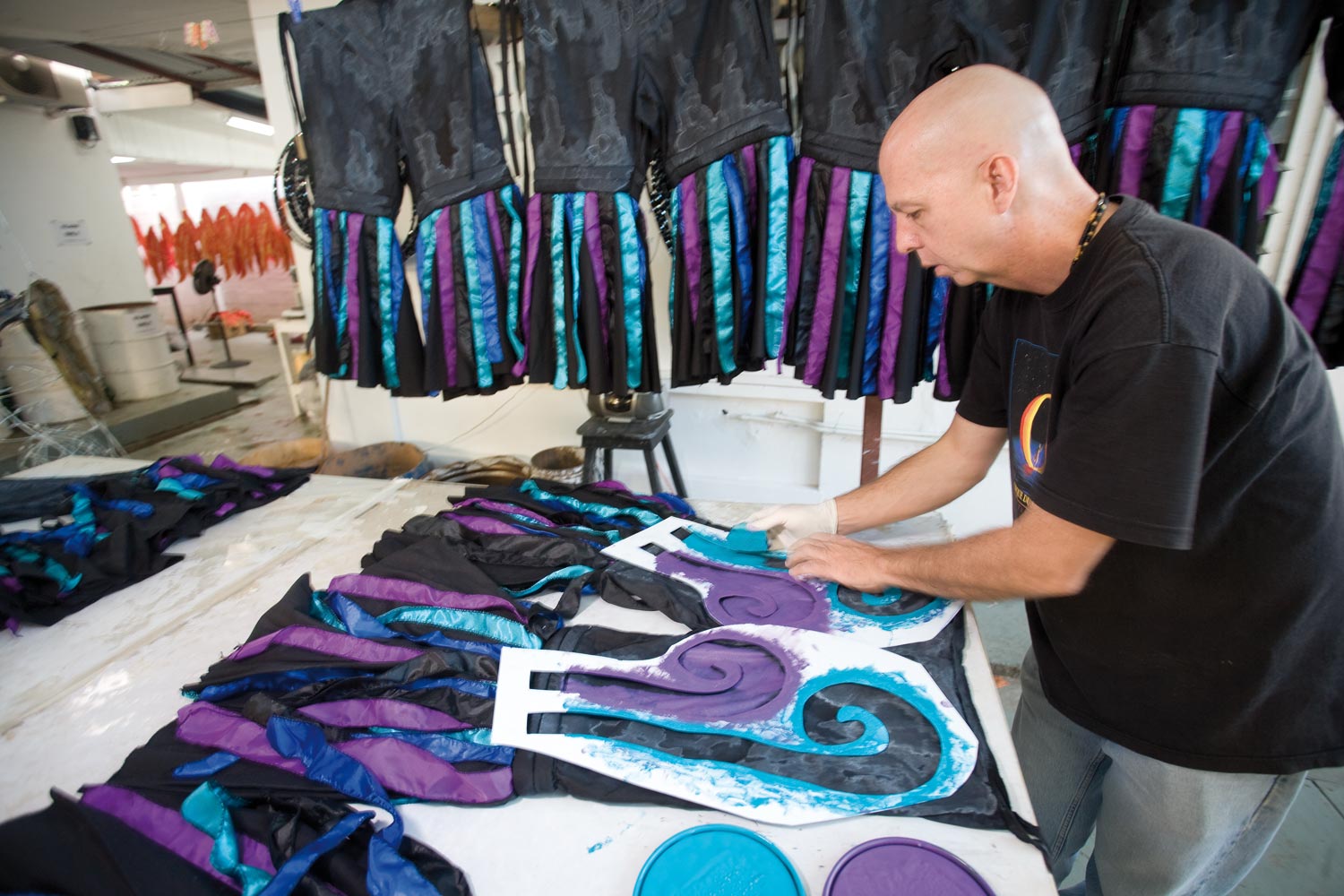Any conversation about Carnival in Trinidad and Tobago inevitably turns to the excitement and colour of Monday and Tuesday, the indelible vision of thousands of people in sparkling costumes moving to the commands of the soca overlords who rule the streets during the annual festival.
But before those two days of delirious extravagance comes another, very different season, one in which many thousands more work well into the night for months to build the costumes.
In recent years, the temptations of cheap labour have lured some bands to offshore production in China. But this home-grown army of artisans, craftsmen and line workers remains the engine room of the mas.
Some of them are career Carnival tradesmen, prized for their skills, which have almost disappeared, such as their craftsmanship as seamstresses or belt-makers. Their work ranges from carefully repeating the arrangements of the appliqués on dozens of bra cups to welding the massive metal superstructures that support king and queen costumes.
Their tools are similar — glue guns, decorative appliqués and carefully stitched cloth — but the work they create is often startlingly different.
In Band of the Year winner Brian MacFarlane’s Woodbrook camp, cloth and paint were used to create a palette strongly influenced by natural colours for his band Earth: Cries of Despair, Wings of Hope.
Miles away in Union Hall, San Fernando, in a small room adjoining the home of bandleader Astil Alleyne, band workers glued feathers painstakingly to headpieces that reproduced the spirit of traditional Red Indian mas, for a band that’s smaller than any single section in most popular bands.
In Woodbrook, mas central for Trinidad and Tobago, two of the largest costume bands, Tribe and Harts, create the popular “pretty mas” that draws customers by the thousands. The Harts, the second generation of a family that has been creating popular, colourful costumes for decades, produce the band the way their parents, Edmund and Lil, did: everyone working in one camp, toiling at adjoining tables to finish the band. Tribe, celebrating its fifth year in 2009, started as a section in the now defunct band Poison and developed a management-driven, customer-focused approach to band production. Tribe’s leadership designs most of the costumes, then passes prototypes to “producers”, independent contractors who build the costumes under the band’s supervision and quality control.
In this shadow world of Carnival, the basic tools may remain the same, but new materials and production techniques allow the backstage wizards of mas to keep one eye on the budget and the other on customer satisfaction as they put the shine and sparkle in Carnival each year.



























